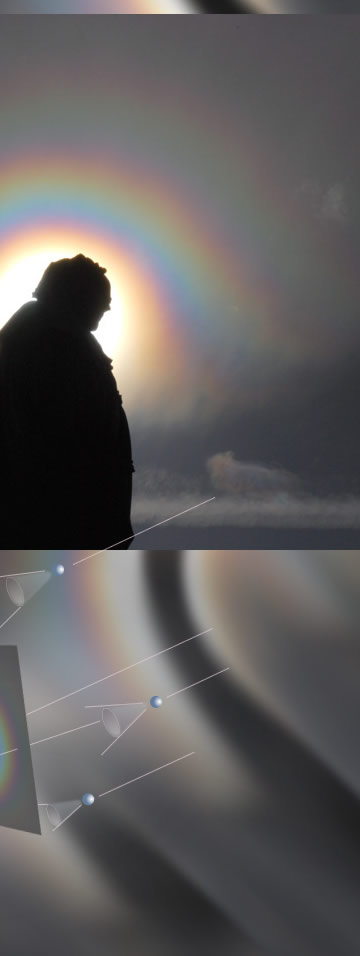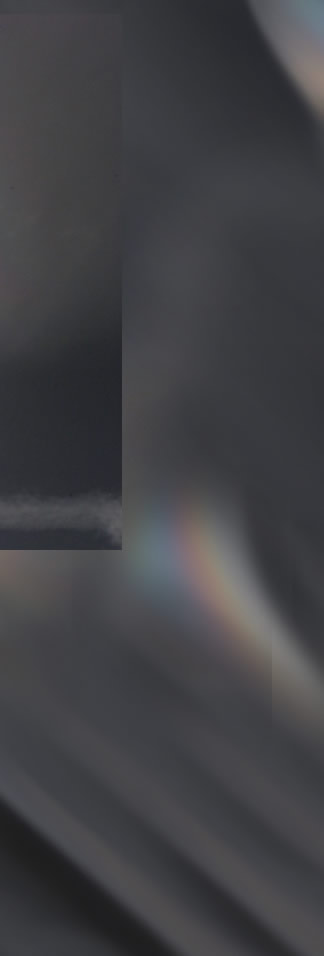Intense Corona/Iridescence around the Duke of Argyll statue, Royal Mile, Edinburgh, Scotland. An unenhanced image August 25, '08 by Eva Seidenfaden (Paraselene Optics).
Image ©Eva Seidenfaden, shown with permission.
Droplets in clouds and mist produce a single sky-wide diffraction pattern. The previous OpticsPOD showed its brightest parts opposite the sun, the fogbow and glory. Towards the sun the diffraction pattern brightens again in the multiple rings of a corona.
A symmetrical corona needs uniform sized droplets. When they vary in size across the clouds we see distorted rings (as here) and in more extreme cases the chaotic shapes of cloud iridescence.
Each individual droplet produces its own diffraction pattern represented in the diagram as a diffuse cone of scattered radiation. The eye does not see all the cone because - from a distance - the droplet is visible only as a speck of light. The speck or glint corresponds to the fragment of the individual diffraction pattern that happens to be directed towards the eye. The corona is the sum of millions of individual diffraction glints.
|



